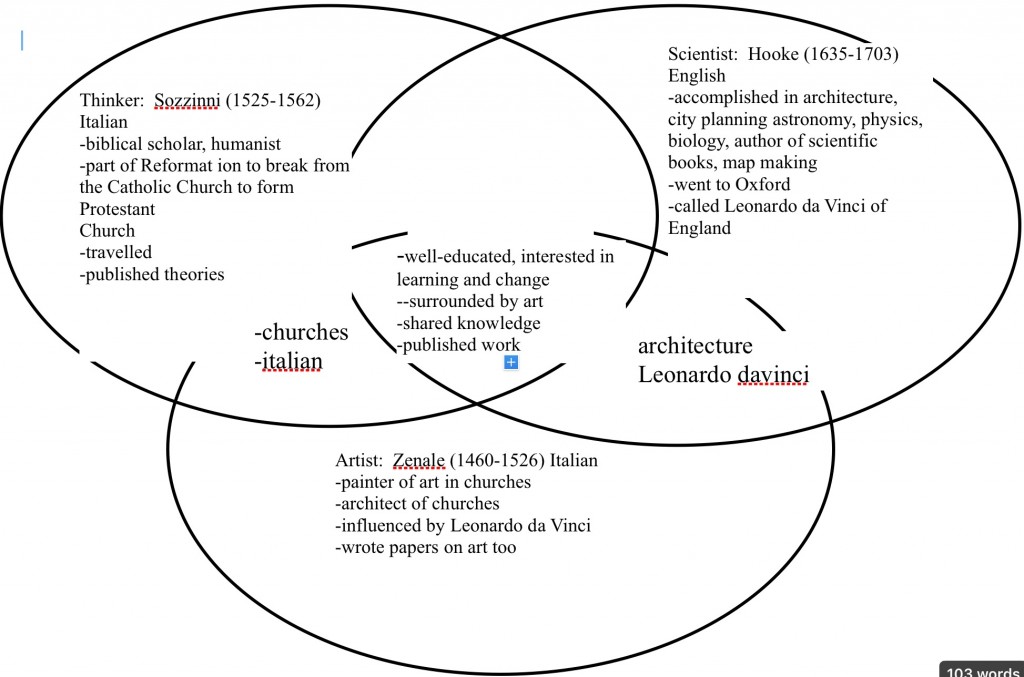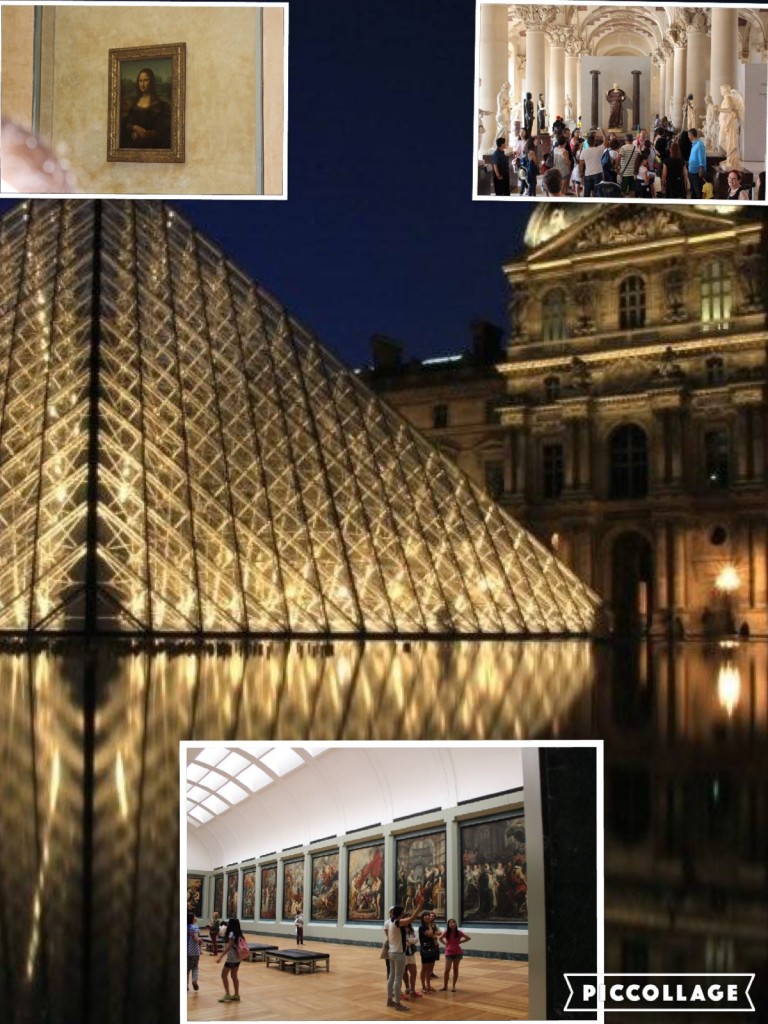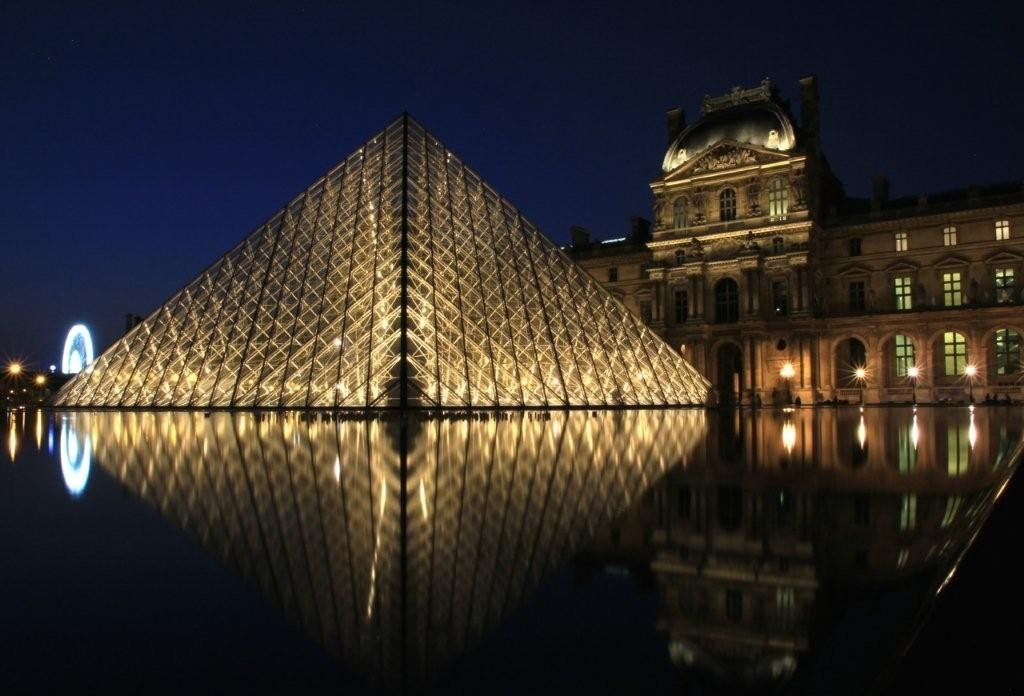How did the Renaissance influence the western worldview?
First I researched a Renaissance thinker, artist and scientist. The thinker was Leilo Sozzini, the scientist was Robert Hooke and the artist was Bernardo Zenale. I researched their main achievements and answered questions related to our worldview. After, I created the Venn diagram to show what they had in common.
Leiolo Sozzini
The humanist I read about was Leilo Sozzini. (1525-1562). He studied the bible and was one of the founders of ideas that led to Reformation. Reformation was a movement to address concerns some people had with the Roman Catholic church. Reformation led to the start of the Protestant religion and the Unitarian church was part of it. Sozzini questioned things like the need to attend mass and resurrection. There are still many people who are members of Unitarian church today. One of his theories was that even though Jesus had a special status, he was a human being. The Unitarian church followers still believe in this today.
Bernardo Zenale
The artist I studied was Bernardo Zenale. He was born in Italy (1460 – 1526) He has many famous paintings in churches and his style was influenced by Leonardo da Vinci. A famous painting is Madonna and child with saints. By 1513 Zenale started to work more on architecture and he became an architect for the Milan Cathedral. He also wrote about art theory and a paper on the science of perspective. Linear perspective emerged during the Renaissance as the tool for artists to capture the world in a very realistic way.
Much of the renaissance art focused on religion and the individual but today our worldview of art is more diverse and people have more freedom of speech to write and create what they want. I think this means that our worldview is more global. We see more because of the internet and travelling. Art can send a very clear message or it can be hard to understand and left up to people to figure out what it means. Modern art still uses ideas from the Renaissance like perspective. People today appreciate both the ancient and historical classical art but we also like modern art and modern buildings. We mix old and new to get the best of both worlds. There is something for everyone.
Robert Hooke
Robert Hooke was the scientist I researched from England (1635 – 1703). He was also an architect. He wrote the law of elasticity (Hooke’s law), (a small amount of displacement is directly proportional to the force). He was the first to use the word cell to describe the basic unit of life. He invented the microscope with light and an adjusting focus. He also worked on gravity and he built some of the earliest Gregorian telescopes and observed Mars and Jupiter rotating. He figured out wave light theory and that matter expands when heated. He was also an architect and he set up planning controls for London which are still used today. He helped rebuild London after the great fire of 1666. Robert Hooke is considered one of the greatest scientists of his age and has been called England’s Leonardo.
Robert Hooke’s work is an example of how Renaissance’s experience with direct observation and experimentation is carried through in Science today. Hooke was Curator of Experiments for the Royal Society, whose purpose was to advance scientific understanding of the world. He wrote the book called Micrographia that showed tiny details of the natural world never seen before. That is why it is considered one of the most important scientific books ever written. This work with direct observation and experimentation influenced our knowledge today of microbiology, quantum physics and nanotechnology.
Modern science and math is based on the foundations of direct observation and experimentation developed during the Renaissance. It is still a source for growth and knowledge in many areas like the medical field, nutrition, agriculture, computers, transportation and quality of life. Advances in technology have provided an opportunity to take observations and experimentation even further like solar systems, deep sea oceans, molecules, oceans beds new energy sources and advancing life expectancy.
I like this quote from Robert Hooke about observation that seems to predict what we can do today:
“By the means of Telescopes, there is nothing so far distant but may be represented to our view; and by the help of Microscopes, there is nothing so small as to escape our inquiry; hence there is a new visible World discovered to the understanding.”
When looking at all three Renaissance men, it seemed like what they had in common was that they loved to learn and look at change. They were driven to seek knowledge through their education and mentors. They all shared their work by displaying it or writing about it.
Here is the Venn diagram
For a visual, I thought of using a photo of the Louvre because it is the most famous musuem in the world and its goal is to educate and share knowledge. It shares culture from all over the world and every century, especially the Renaissance and is very popular in modern times. Even the architecture is old and new. I went there and I thought it was neat that you could get so close to the most famous art in the world.
I started with a photo of the outside of the Louvre that my cousin took and then I added photos from inside that I took, even the Mona Lisa by Leonard da Vinci. The artist and scientist I researched were both linked to Leonardo. I used PicCollage and Afterlight.
Here is the final visual of the Louvre, inside and out. The Renaissance influenced the western worldview’s appreciation of art and learning. The Louvre is the worlds most famous museum with art from all ages, for all ages.
By studying the great achievements of the Renaissance I can now see how it helped create an important part of the foundation for our western Worldview.



